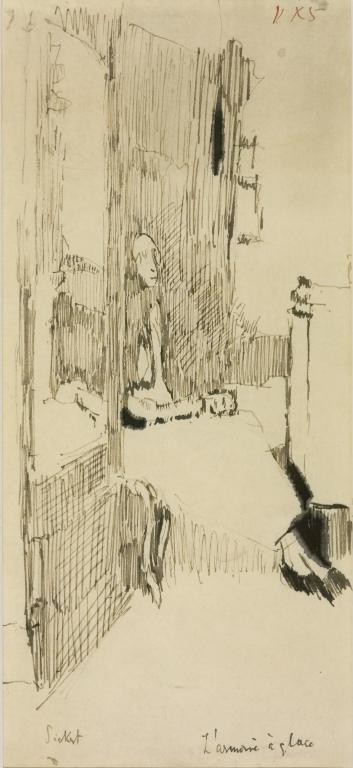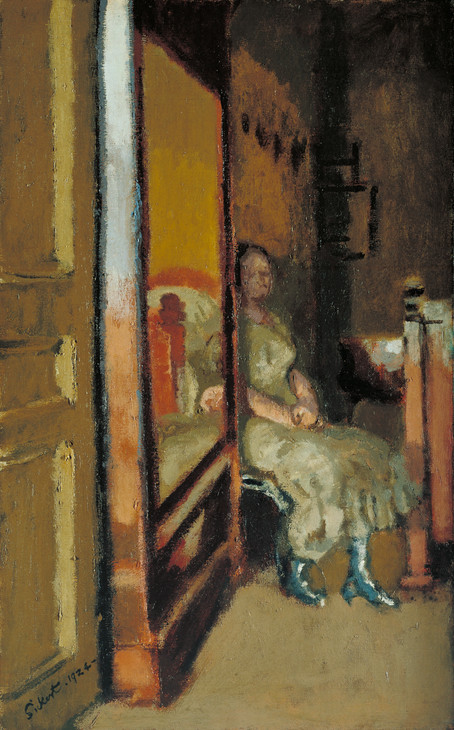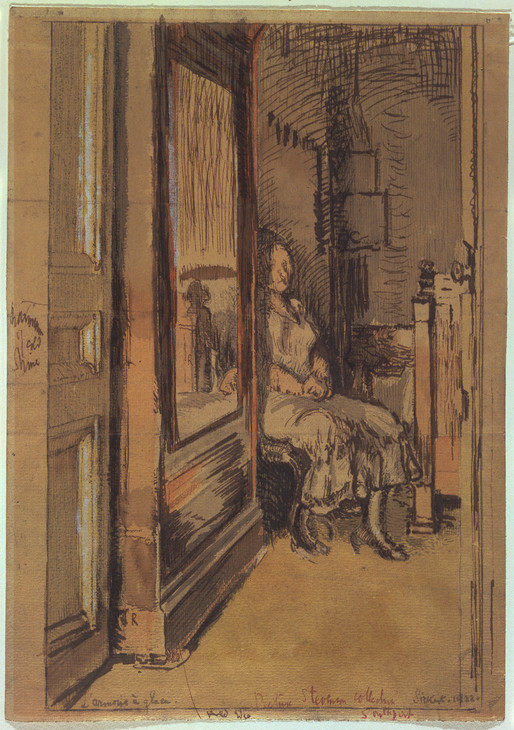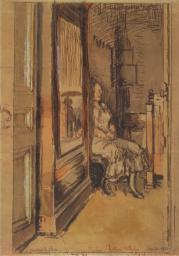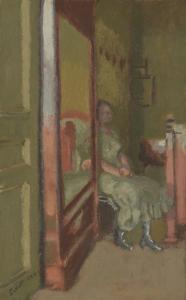This is a preparatory study for the oil painting
L’Armoire à glace (Tate
N05313). The artist chose a thin, cream-coloured laid paper of good quality, which has a part of its watermark in the top left-hand corner, reading only ‘Co.’ The measurements of the paper roughly correspond to 11 x 5 inches, which is inscribed in red ink in the top right-hand corner on the recto, although there is a further inscription, also in red ink, on the verso which notes ‘Reduce to 5 x 2½’. The top edge of the sheet retains its deckle edge and the remainder are cut straight. The image is drawn within a square of red ink that was marked by ruled lines along the bottom, left and right-hand edges, and trimmed along to create the current sheet. Sickert composed the image within the full dimensions of the area, first sketching in a graphic medium and then reinforcing these lines with ink. Initial drawing appears to have been executed in a very soft graphic medium that may have been blue or purplish in tone. The original extent of this drawing is not known although an undated photograph suggests that there were vertical lines in the foreground and background and lines indicating the hem and folds in the sitter’s skirt. It is possible that Sickert used crayon or chalk or traced the lines through carbon paper, making a very soft impression on the paper that was extremely vulnerable to abrasion and over time has been lost. The ink is very likely to be blue or black writing ink, although it has now faded to a warm brown colour. In places it has been applied with a fine pen in cross-hatched lines and in others has been heavily applied to block in areas of shadow.
Tomoko Kawamura
November 2005
How to cite
Tomoko Kawamura, 'Technique and Condition', November 2005, in Nicola Moorby, ‘Study for ‘L’Armoire à glace’ c.1922 by Walter Richard Sickert’, catalogue entry, April 2005, in Helena Bonett, Ysanne Holt, Jennifer Mundy (eds.), The Camden Town Group in Context, Tate Research Publication, May 2012, https://www.tate.org.uk/art/research-publications/camden-town-group/walter-richard-sickert-study-for-larmoire-a-glace-r1139852, accessed 02 April 2025.

